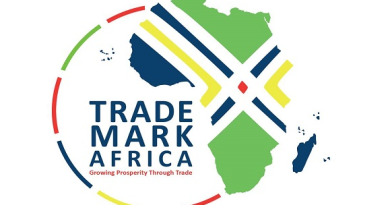Healthcare waste from COVID threatens environment: WHO
Tens of thousands of tonnes of medical waste have been generated in the two years since the coronavirus began spreading globally.
The vast amount of waste accumulated as part of efforts to tackle the COVID-19 pandemic poses a threat to human and environmental health, the World Health Organization (WHO) has warned.
Discarded syringes, used test kits and old vaccine bottles have piled up to create tens of thousands of tonnes of medical waste, putting a huge strain on healthcare waste management systems, the United Nations health agency said in a new report on Tuesday.
The 71-page document said a large share of the 87,000 tonnes of personal protective equipment (PPE) ordered via a UN portal between March 2020 and November 2021 ended up as waste
Additionally, more than 140 million test kits have been shipped, with the potential to generate 2,600 tonnes of mainly plastic and enough chemical waste to fill one-third of an Olympic swimming pool.
Some eight billion vaccine doses administered globally were also estimated to have produced an additional 144,000 tonnes of waste in the form of glass vials, syringes, needles and safety boxes.
While the WHO does not recommend using gloves for vaccine injections, the report said this appeared to be common practice. Citing the United Kingdom as an example, it estimated each health worker discards an average of 50 pairs of gloves per week into the general waste system.
“It is absolutely vital to provide health workers with the right PPE. But it is also vital to ensure that it can be used safely without impacting on the surrounding environment,” said Michael Ryan, WHO emergencies director.
The discarded material poses a potential hazard to health workers to burns, who are exposed to needle-stick injuries and disease-causing germs, as well as communities close to poorly-managed landfills, who can be affected through contaminated air from burning waste, poor water quality or disease-carrying pests.
The report did not name specific examples of where build-ups occurred but referred to challenges such as the limited official waste treatment and disposal in rural India, as well as large volumes of faecal sludge from quarantine facilities in Madagascar.
The UN health body called for reform and additional investment, including through the reduction in the use of packaging, using PPE more rationally and investing in non-burn waste treatment technology.
Lack of resources
Today, 30 per cent of healthcare facilities (60 per cent in the least developed countries) are not equipped to handle existing waste loads, let alone the additional waste.
This can expose health workers to needle injuries, burns and pathogenic microorganisms, said WHO. Communities living near poorly managed landfills and waste disposal sites can be impacted by contaminated air from burning waste, poor water quality, or disease carrying pests.
The Director for Environment, Climate Change and Health at WHO, Maria Neira, believes the pandemic has forced the world to reckon with this problem.
“Significant change at all levels, from the global to the hospital floor, in how we manage the healthcare waste stream, is a basic requirement of climate-smart health care systems”, she said
Recommendations
The report lays out a set of recommendations, including eco-friendly packaging and shipping; purchasing safe and reusable PPE, made of recyclable or biodegradable materials; investment in non-burn waste treatment technologies; and investments in the recycling sector to ensure materials, like plastics, can have a second life.
For WHO, the health crisis also offers an opportunity to develop strong national policies and regulations, change behaviours, and increase budgets.
TheChair of the Health Care Waste Working Group, Dr Anne Woolridge, noted that there is a growing appreciation that health investments must consider environmental and climate implications.
“For example, safe and rational use of PPE will not only reduce environmental harm from waste, it will also save money, reduce potential supply shortages and further support infection prevention by changing behaviours”, she explained
Pandemic update
Last Sunday, 30 January, marked two years since WHO declared COVID-19 a public health emergency of international concern, the highest level of alarm under international law.
At the time, there were fewer than 100 cases and no deaths reported outside China.
Two years later, more than 370 million cases have been reported, and more than 5.6 million deaths, and WHO says the numbers are an underestimate.
Since the Omicron variant was first identified just 10 weeks ago, almost 90 million cases have been reported, more than in the whole of 2020.
The WHO Director-General, Tedros Adhanom Ghebreyesus, said that a narrative has taken hold in some countries that because of vaccines, and because of Omicron’s high transmissibility and lower severity, preventing transmission is no longer possible, and no longer necessary.
“Nothing could be further from the truth”, he said.
He noted that WHO is not calling for any country to return to lockdown, but all nations should continue to protect their people using every tool in the toolkit, not vaccines alone.
“It’s premature for any country either to surrender, or to declare victory”, he argued




